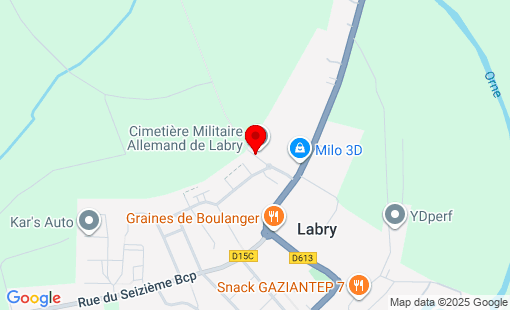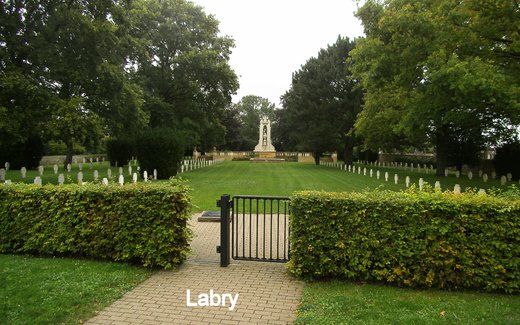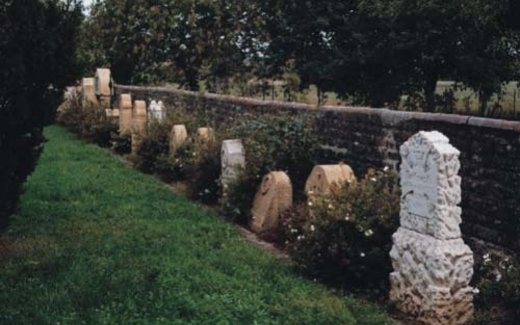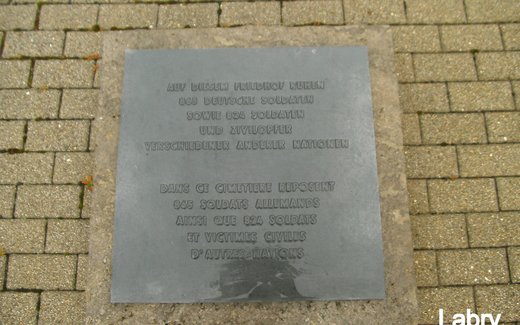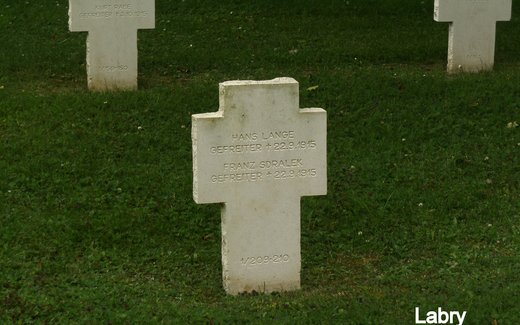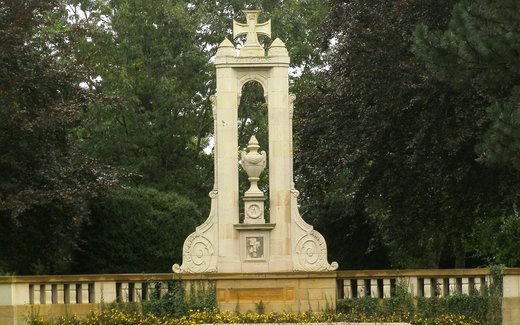First World War
The German military cemetery in Labry was established by the troops in January 1915
by their own troops. The Labry railroad junction - together with Conflans and Jarny - was
was the main supply point for the Verdun front at this time and at the same time
Location of several military hospitals, including an epidemic hospital. Those who died here
And the victims of accidents and the sick on stage duty were buried in the cemetery
buried in the cemetery. As numerous prisoners of war from various nations were
prisoners of war from various nations were used for work in the rear area, including road construction
and mining, 54 Belgians, 92 Romanians, 133 Russians and 53 Frenchmen were originally buried here,
133 Russians and 53 Frenchmen lay next to the German war dead. in 1972, the
french military administration arranged for these dead to be transferred to national cemeteries
Cemeteries. In the following years, German casualties were found,
whose mortal remains were found during work on the former battlefields of Verdun were laid to rest here
Verdun were laid to rest here. The dead of the
Austro-Hungarian Army belonged to the Austro-Hungarian 35th Inf. div. which - together with three other
Divisions in the summer of 1918 - to support the allies on the western front
Western Front. This division had its peacetime base in
Transylvania (today Romania). The crews were predominantly of Romanian
Nationality, mixed with Germans (Transylvanian Saxons) and Magyars.
When on Sept. 12, 1918, the Allies - Americans and French - attacked the so-called.
Mihiel Arch on September 12, 1918, the Imperial and Royal 35th J.Div. lost 99 officers and 3200 men
killed, wounded and captured, including many victims of poison gas.
Repair work between the wars
Although the care between the Volksbund Deutsche Kriegsgräberfürsorge
e. V. and the French military authorities on the basis of an agreement reached in 1928
Agreement concluded in 1928, but due to the large number of
Nations involved, this could not be applied to Labry. So the
Maintenance remained largely in French hands. Final design.
After the conclusion of the Franco-German war graves agreement of July 19
1966, the Volksbund Deutsche Kriegsgräberfürsorge e.V. (German War Graves Commission) - financially
supported by the German government - was able to complete the final design of the German
Cemeteries of the First World War in France. Volunteers
volunteers from the War Graves Commission had already started the preparatory gardening work
work, but completion was delayed due to the intended reburial of the
Reburial of the dead of other nations. It was not until 1979 that the
replace the previous temporary wooden grave markers with crosses made of natural stone
engraved with the names and dates of those buried here. The two graves
of the fallen of the Jewish faith were marked with a gravestone
A grave stele made of natural stone instead of a cross for religious reasons
hebrew characters read:
1. (above) "Here rests buried ... ."
2. (below) "May his soul be included in the circle of the living."
This was followed by a final, fundamental landscaping overhaul of the entire site
Grounds followed.
The memorial, which was erected during the First World War, was restored, the surrounding walls
the surrounding walls were repaired, the entrance was redesigned and the
And the gravesite was landscaped.
Maintenance:
The cemetery is constantly cared for by the Volksbund's maintenance service.
France
Labry
Total Occupation: 1.300 fatalities
Total Occupation: 1.300 fatalities
Contact
